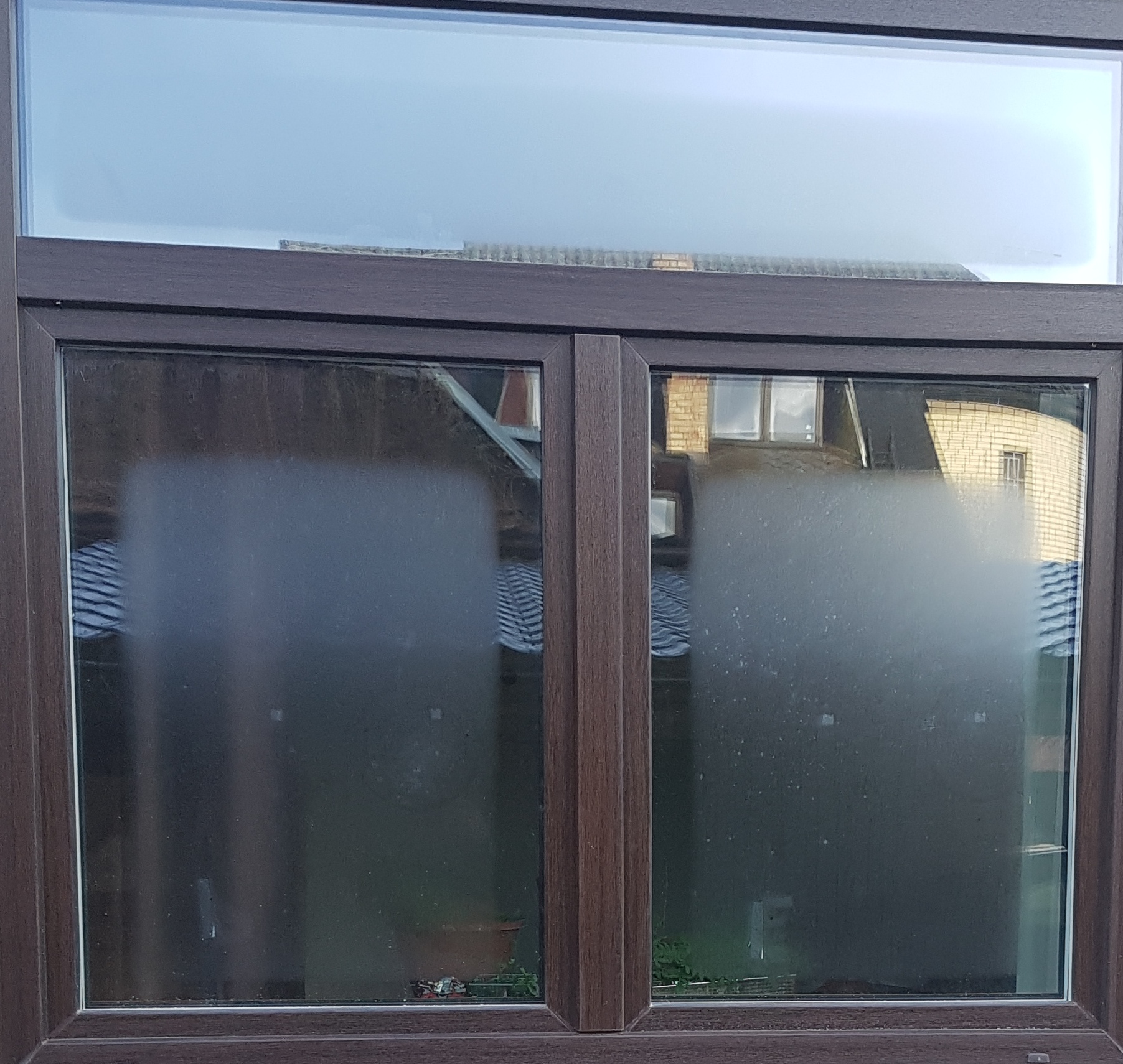- Home
- About IGU's
- Insulating glass unit phenomena
Insulating glass unit phenomena
Physical phenomena may emerge in insulating glass units. All these phenomena are typical of insulating glass units and are not considered as defects. They are:
The interference effect can be observed in insulating glass units with polished (float) glass units. This effect is manifested in coloured zones of greater or smaller intensity which change when touching the glass. Optical interference appears due to the clash of light waves in one spot. The effect increases in case of parallel or almost parallel glass surfaces. The interference effect can be seen on the whole glass area or part of the glass area.
The interference phenomenon emerges randomly and cannot be influenced.
A insulating glass units has a closed hermetic amount of air or other gas. The amount of gas in a insulating glass units is established at the place of manufacturing in terms of altitude, atmosphere pressure and temperature at the time of manufacturing. If a insulating glass units is mounted at the different altitude, then the air pressure or temperature may change during operation, causing deformation of glass units in the insulating glass unit, i. e. glass can camber or deflect causing distorted view.
View reflections of different size and intensity may be also visible on glass packs. Such reflections can be especially clear if the background is dark or coated glass is used.
Anisotropy - phenomenon typical of tempered glass due to internal tensions which appear during the tempering process. Due to anisotropy dark circles or strips can be visible which change according to the angle of view, if glass is in polarised light or the view is seen through polarised glass.
Polarised light exists in the normal day light as well. The level of polarisation depends on the air conditions and position of the sun. The effect is clearer when looking at the glass at oblique angle or in insulating glass units mounted in corner facades at vertical angle.
Condensate can form on the external side of glass, if the temperature of such glass is lower than the temperature of the air. Formation of condensate on the external surface of the insulating glass unit depends on the coefficient of light transmittance of the insulating glass unit, relative air humidity, air movement near the glass surface as well as outside and inside temperatures.
Condensate is most often formed on the glass surface inside the room due to insufficient air movement near the glass surface, for example, caused by curtains, blinds, deep arch, flower pots, unfavorable location of heating devices, etc.
In certain cases, condensate can form on the external surface of the outside glass in insulating glass units with good heat insulation, when relative outside air humidity is high and outside air temperature is higher than the glass surface.


The degree of water and glass surface coherence may be different due to the stamps left by rollers, fingers, labels, paper texture, vacuum pick-up tools, remains of sealing materials, signs left by glazing or other means. Zones of different humidity can be clearly visible when glass becomes wet due to weeping (condensate), rain or use of water for washing.

Damage can be done to the glass surface by mechanical, thermal or chemical factors.
Etching with alkaline substances
Alkaline substances washed away from the concrete surfaces and reaching glass as well as splashes of grout can cause etching of the glass surface.
During construction, the mounted glass surfaces must be protected from such factors. Fresh and not yet stiffen splashes of grout can be washed off with water, and damage of glass can only be eliminated with special cleaners. Old damages are usually not possible to eliminate.
Welding drops and sparks from polishing discs and cutting discs
If welding and polishing works are performed near glass surfaces, welding drops or hot polished particles can penetrate the glass. Micro cracks remain on the glass surface after cleaning them from the glass surface.
Facade cleaning factors
Facades very often become dirty and splashed with construction materials during the construction works, especially in brick buildings. In such cases glass surface is usually cleaned with facade cleaners containing hydrofluoric acid which can make damage to the glass surface. This can be avoided by covering glass units with plastic film when construction works are carried out.
Glazing elements should be protected from such kind of damage, as responsibility for them falls to the construction contractor.
It is impossible to provide a thorough and complete list of protective measures due to the great variety of possible damage to the glass surface. Risk must be assessed and respective protection measures applied in each specific case.
Checking
General view through a insulating glass unit, i. e. looking at the background behind the insulating glass unit and not at reflections is the most important when performing checking for defects. Possible unconformities are not specifically described or defied.
Checking of glass products in accordance with the Table presented below should be made at the distance of approximately 1 m from the inspected surface, at a certain angle of looking which corresponds to the conventional use of the premises. Checking shall be made in the dispelled day light (for example, cloudy sky), without direct sunshine or direct artificial lighting.
Inspection
In accordance with the LST EN 1279-1 standard, a methodology for evaluating the visual quality of insulating glass units, including tolerances and permissible defects, is established.
description.pdf










